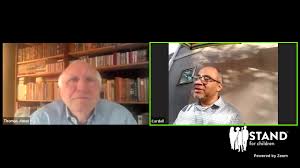From Mercatus Center at George Mason University Blog:
Earlier this month Bay Area Rapid Transit (BART) workers went on their second strike of the year. With public transport dysfunctional for four days, area residents were not necessarily sympathetic to the workers’ complaints, according to The Economist. The incident only drew attention to the fact that BART’s workers weren’t contributing to their pensions.
Under the new collective bargaining agreement employees will contribute to their pensions, and increase the amount they pay for health care benefits to $129/month. The growing cost of public pensions, wages and benefits on city budgets is a real matter for mayors who must struggle to contain rapidly rising costs to pay for retiree benefits. San Jose’s mayor, Chuck Reed has led the effort in California to institute pension reforms via a ballot measure that would give city workers a choice between reduced benefits or bigger contributions, known as the Pension Reform Act of 2014. Reed is actively seeking the support of California’s public sector unions for the measure that would give local authorities some flexibility to contain costs. Pension costs are presenting new threats for many California governments. Moody’s is scrutinizing 30 cities for possible downgrades based on their more complete measurement of the economic liability presented by pension plans. In spite of this dire warning, CalPERS has sent municipalities a strong message to struggling and bankrupt cities: pay your contributions, or else.
Other states and cities that are looking to overhaul how benefits are provided to employees include Memphis, Tennessee which faces a reported unfunded liability of $642 million and a funding ratio of 74.4%. This is using a discount rate of 7.5 percent. I calculate Memphis’ unfunded liability is approximately $3.4 billion on a risk-free basis, leaving the plan only 35% funded.
The options being discussed by the Memphis government include moving new hires to a hybrid plan, a cash balance plan, or a defined contribution plan. Which of these presents the best option for employees, governments and Memphis residents?
I would suggest the following principles be used to guide pension reform: a) economic accounting, b) shift the funding risk away from government, c) offer workers – both current workers and future hires – the option to determine their own retirement course and to choose from a menu of options that includes a DC plan or an annuity – managed by an outside firm or some combination.
The idea should be to eliminate the ever-present incentive to turn employee retirement savings into a budgetary shell-game for governments. Public sector pensions in US state and local governments have been made uncertain under flawed accounting and high-risk investing. As long as pensions are regarded as malleable for accounting purposes – either through discount rate assumptions, re-amortization games, asset smoothing, dual-purpose asset investments, or short-sighted thinking – employee benefits are at risk for underfunding. A defined contribution plan, or a privately managed annuity avoids this temptation by putting the employer on the hook annually to make the full contribution to an employee’s retirement savings.





Thank you for your original and appealing content. This is a very informative and well-written article with many solid points. I can honestly concur with a lot of your material.